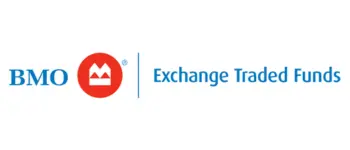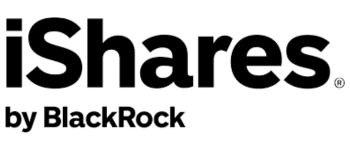Canadian Bank ETFs: Baskets of Canada’s Shining Stars.
Key takeaways
Financial sector resilience – Despite economic uncertainty, Canada’s banking system remains one of the strongest globally, benefiting long-term ETF investors.
Canadian banks offer strong dividends – ETFs tracking Canadian banks provide stable, high-yield dividends, making them attractive for income-focused investors.
Different strategies for different goals – Equal-weight, covered-call, and enhanced ETFs cater to various investment styles, from growth to income and risk management.
One ETF I like way better than the ones on this list.Canada’s big banks are considered some of the best stocks in Canada, as well as globally. Often, when newcomers are learning how to purchase stocks in Canada, they are advised to start with these major financial institutions.
During the 2008 financial crisis, Canadian bank stocks were among the few that didn’t cut or suspend their dividend. Sure, they didn’t raise dividends, but kept their heads above water. Also, most of the Canadian bank’s stock prices were back to pre-crash prices within a year or two.
So not only have they been highly reliable investments in the past, but they likely will be in the future.
There’s a catalyst for banks and financial companies in general right now, but also a headwind
That is higher interest rates, at least relative to before the pandemic. Banks loan money. As such, higher interest rates are a massive positive for bank stocks.
However, at this point in time higher interest rates are putting substantial pressure on Canadian consumers, particularly mortgage holders. Although banks are making more net interest income, provisions for credit losses are rising and credit quality is deteriorating.
Investors are worried about the Canadian housing market. Homes simply aren’t as affordable with higher interest rates.
These banks are well capitalized and have plenty of wiggle room when it comes to added provisions. But it is no doubt something you need to keep in mind if you’re going to be investing in them.
Despite this, there is still high demand for Canadian bank ETFs
Canadians and investors worldwide want a piece of Canada’s Big 5 banks, as they are recognized as some of the best dividend-paying stocks in the world. That’s why you won’t find too many Canadian ETFs that don’t have a heavy position towards Canada’s banks.
Every institution except Scotiabank in these banking ETFs are also Canadian Dividend Aristocrats, signaling more than five straight years of dividend growth. Companies like the Royal Bank, Bank of Montreal, and TD Bank have dividend payment streaks that date back to the 1800s.
Investors who are worried about buying the wrong stock or don’t want to constantly balance a portfolio of individual stocks can look towards these ETFs for instant diversification across Canada’s six biggest banks. In some cases with the funds I’ll go over below, they give you broad exposure to the Canadian financial sector.
Niche ETFs like bank funds are exploding in popularity, and there are plenty of niche ETFs here in Canada. A prime example of this would be a niche ETF that covers an asset that has exploded in popularity, Canadian gold ETFs. This piece has become highly relevant as gold is becoming popular again.
For this piece, however, I’m going to dive into some of the best Canadian banking ETFs in the country.
So what are the top Canadian banking ETFs?
- Hamilton Canadian Bank Equal Weight Index ETF (TSE:HEB)
- Hamilton Enhanced Canadian Bank ETF (HCAL.TO)
- BMO Equal Weight Banks Index ETF (TSE:ZEB)
- BMO Covered Call Canadian Bank ETF (TSE:ZWB)
- iShares Equal Weight Banc & Lifeco (TSE:CEW)
- iShares Canadian Financial Monthly Income ETF (TSE:FIE)
- iShares S&P/TSX Capped Financials Index ETF (TSE:XFN)
Equal-weight exposure to Canada’s Big Six banks
Hamilton Canadian Bank Equal Weight Index ETF (TSE:HEB)

HEB holds Canada’s six largest banks in equal weights, offering balanced exposure without overweighting any single institution. It provides a diversified way to invest in the banking sector without relying on market cap weightings.
1.25x leveraged exposure to Canadian banks
Hamilton Enhanced Canadian Bank ETF (HCAL.TO)

HCAL uses modest leverage (1.25x) to enhance returns on an equal-weighted portfolio of Canada’s Big Six banks. It’s designed for investors seeking higher performance with increased risk.
Equal-weight, non-leveraged exposure to Canadian banks
BMO Equal Weight Banks Index ETF (TSE:ZEB)

ZEB holds Canada’s Big Six banks in equal weight, ensuring balanced exposure without favoring larger institutions.
Covered-call strategy for enhanced income
BMO Covered Call Canadian Bank ETF (TSE:ZWB)

ZWB uses a covered-call strategy on Canadian banks, generating additional income but capping upside potential.
Balanced exposure to banks and insurance companies
iShares Equal Weight Banc & Lifeco (TSE:CEW)

CEW provides equal-weighted exposure to Canada’s major banks and life insurance companies. This mix reduces sector concentration risk compared to bank-only ETFs while still capturing financial sector growth.
Hybrid fund with stocks, bonds, and preferred shares
iShares Canadian Financial Monthly Income ETF (TSE:FIE)

FIE is designed for income-seeking investors, offering exposure to Canadian financial stocks, corporate bonds, and preferred shares. This mix provides stability while maintaining strong yield generation.
Market-cap-weighted exposure to Canadian financials
iShares S&P/TSX Capped Financials Index ETF (TSE:XFN)

XFN tracks the S&P/TSX Capped Financials Index, which includes a broad range of financial sector companies, including banks, insurers, asset managers, and REITs, with a cap on individual holdings to prevent overconcentration.
Which Canadian bank ETF is right for you?
The Canadian bank ETF that is right for you depends largely on your risk tolerance and willingness to pay fees.
While ZWB engages in covered calls to increase their income, the management fees are also higher. Keep in mind as well that ZWB’s largest holding is ZEB!
Regarding funds like ZEB and HEB, their equal-weighted nature makes them very easy to duplicate yourself and save management fees, especially when you are on a commission-free trading platform. However, many investors love the idea of monthly distributions and a strong passive income stream.
If you believe the fees are worth the cost of admission with these ETFs, take advantage of owning the biggest stocks in one of the strongest industries in the world in a single click.
Are the fees worth it with these Canadian bank ETFs?
Arguments must be made that these Canadian bank ETFs’ expense ratios aren’t worth it. With minimal holdings, these ETFs can be mimicked in an individual portfolio for as little as $30 in commission costs. In fact, at brokerages like Wealthsimple Trade, you can set them up for free.
While we agree that even a tiny amount of time every year could have you managing Canada’s six biggest banks individually in your portfolio, those new to investing or those who don’t want to deal with their portfolios will find these bank ETFs extremely useful. So, there are pros and cons.

